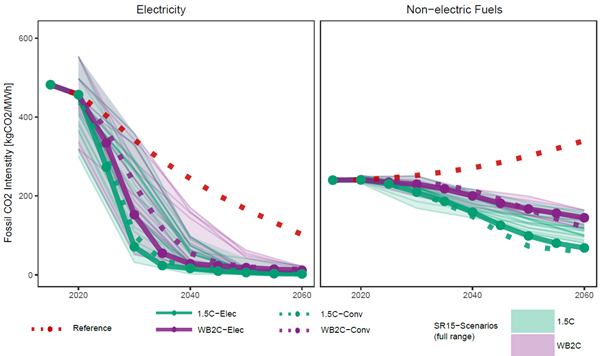
Energy Revolution Ahead? Quite possible! Our new paper @NatureEnergyJnl explores the prospects of renewables-based electrification towards limiting warming at 1.5°C.
nature.com/articles/s4156…
Thread on the key points.
nature.com/articles/s4156…
Thread on the key points.
We are in the midst of a huge technology revolution. In the 2010s, costs for solar PV have decreased by 85%, for wind power by 50% (@REN21), and batteries are repeating that pattern. Solar and wind are already the cheapest electricity option in most parts of the world. 

However, electricity currently only accounts for 20% of global final energy, because it is the most costly energy carrier. The remaining 80% non-electric are mostly fossil-based. Transitioning non-electric fuels to low-carbon will take much longer than decarbonizing electricity. 

We all grew up in a world where firms and consumers pay a lot more for one kWh of electricity than for any other energy carrier. Electricity is the most costly energy carrier, because it is produced by burning fossil fuels at substantial conversion losses.
That’s about to change: Carbon regulation increases costs for non-electric fuels, while technological change makes green electricity ever cheaper. Under stringent climate protection, wholesale electricity prices could fall below prices for combustible fuels between 2035 and 2050. 

Not only electric vehicles, but also heat pumps for buildings and industrial process heat can play a huge role. A lot more end uses can be electrified than most people think! As a result, electricity could account for as much as 75% of global energy demand in the long-term. 

The good news: Renewables-based electrification pathways have greater sustainability co-benefits compared to conventional mitigation approaches relying strongly on bioenergy and CCS. Less land and water needs, lower pollution, and lower impacts on food prices.
This was a great team effort. Many thanks to @MadedduSilvia, @FalkoUeckerdt, @RobertPietzcker, @intasys, @NB_pik and all other co-authors! We also acknowledge funding by @BMBF_Bund via @AriadneProjekt and #EU_DG_Research via the #Horizon2020 #NAVIGATE and #ENGAGE projects.
#IAMs often underestimate the potential of renewables and electrification.Our scenarios with tech progress in solar&wind in line with past trends + demand technology detail are much more transformative than most previous scenarios assessed by #IPCC #SR15.
nature.com/articles/s4156…
nature.com/articles/s4156…

There's now also a freely accessible version of the paper: rdcu.be/cB2Vl
• • •
Missing some Tweet in this thread? You can try to
force a refresh





